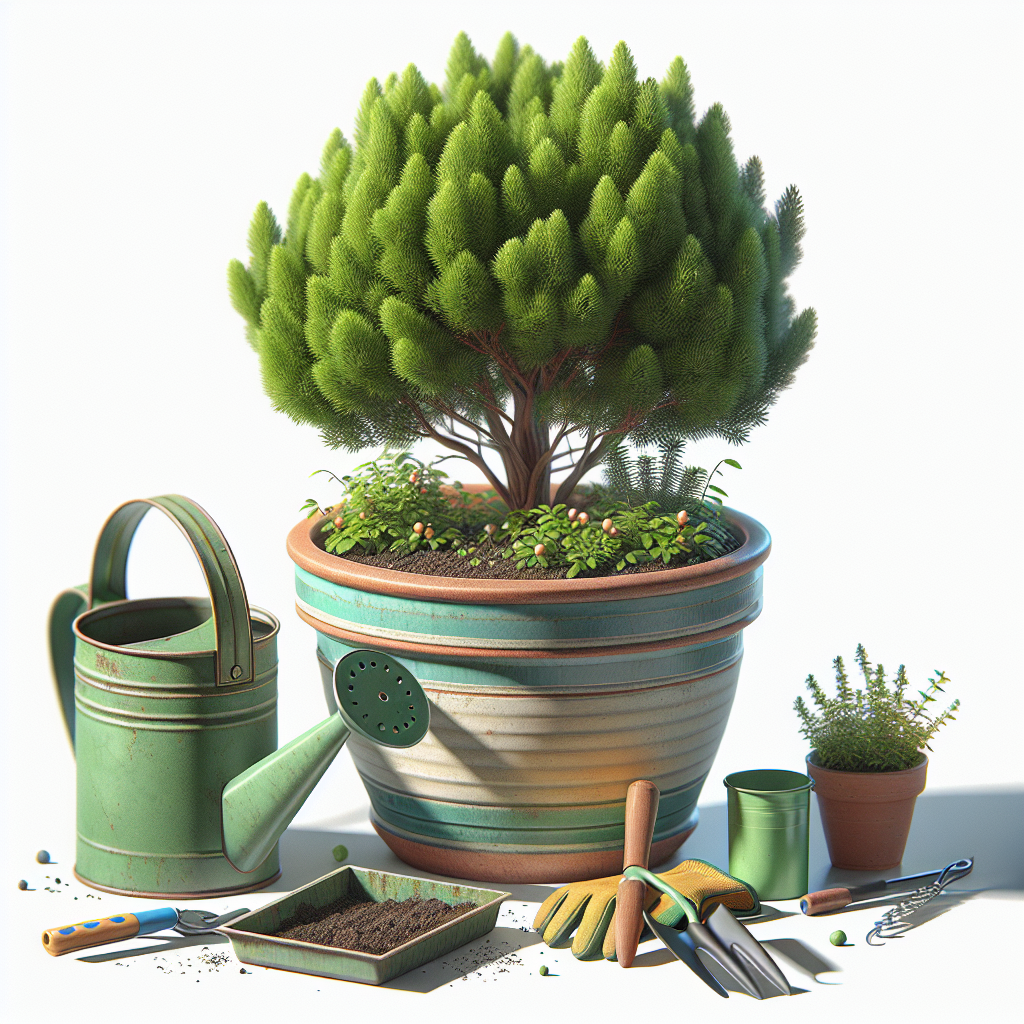Juniper container gardening is a popular way to bring the beauty and fragrance of these evergreen shrubs into small spaces like patios, balconies, and porches. Whether you’re a seasoned gardener or just starting out, there are certain tips and tricks that can help you achieve success with your juniper container garden. By following these guidelines, you can create a stunning display of foliage that will thrive in a limited space.
One of the main advantages of juniper container gardening is its versatility. Junipers come in various sizes and shapes, making them suitable for different types of containers and environments. With the right care and attention, you can create a beautiful focal point for your outdoor space that will last for years to come. So, if you’re looking to add some greenery to your patio or balcony, read on for some expert tips on successful juniper container gardening.
**Choosing the Right Container**
When it comes to juniper container gardening, choosing the right container is crucial. The size of the container will determine how well your juniper plant will grow and thrive. Ideally, you should select a pot that is large enough to accommodate the roots of your juniper plant while allowing for proper drainage. Terra cotta pots are a popular choice for junipers because they are porous and allow excess water to evaporate easily.
If you’re planting multiple junipers in one container, make sure there is enough space between each plant to prevent overcrowding. Overcrowding can lead to poor air circulation and increased risk of disease. Additionally, consider the weight of the container when choosing one for your junipers – make sure it’s sturdy enough to support the weight of the soil and plants without tipping over.
**Selecting the Right Juniper Variety**
There are numerous varieties of junipers available, each with its own characteristics and growth habits. When selecting a juniper for your container garden, consider factors such as size, shape, color, and maintenance requirements. Some popular choices for container gardening include Blue Point Juniper, Gold Lace Juniper, and Old Gold Juniper.
It’s important to choose a variety that is well-suited to growing in containers – look for dwarf or compact cultivars that won’t outgrow their space too quickly. Consider how much sunlight your outdoor space receives when selecting a juniper variety – some varieties require full sun while others can tolerate partial shade. Finally, choose a variety that complements the overall aesthetic of your outdoor space – whether you prefer a formal look or a more naturalistic style.
**Proper Planting Techniques**
Once you’ve selected the right container and juniper variety for your garden, it’s time to plant them properly. Start by filling the bottom of the pot with a layer of gravel or small rocks to improve drainage. Next, add a high-quality potting mix specifically formulated for succulents or cacti – this will provide good drainage while retaining moisture.
Carefully remove your juniper from its nursery pot and gently loosen any compacted roots before placing it in the center of the container. Fill in any gaps with additional potting mix until the roots are covered but avoid burying the stem or foliage below soil level. Water your newly planted juniper thoroughly to help settle the soil around its roots.
**Watering and Feeding**
Proper watering is essential for success with juniper container gardening. While junipers are drought-tolerant once established, they still require regular watering during hot weather or prolonged dry spells. Check the moisture level of the soil regularly by inserting your finger into it – if it feels dry an inch below the surface, it’s time to water.
During winter months or cooler weather when evaporation rates are lower, reduce watering frequency accordingly to prevent root rot caused by waterlogged soil.
Additionally
To keep your junipers healthy and thriving,
fertilize them regularly during their active growing season (typically spring through fall). Use a balanced fertilizer specifically formulated for evergreen shrubs,
following package instructions carefully
to avoid overfeeding.
Avoid fertilizing during winter months when most plants are dormant,
as this can promote excessive growth that may be vulnerable
to cold temperatures.
**Pruning and Maintenance**
Regular pruning is necessary to maintain the shape and size
of your junipers in containers.
Remove any dead or damaged branches using sharp
pruning shears,
making clean cuts just above nodes or junctions with other branches.
Pinch back new growth periodically
to encourage bushier growth
and prevent legginess.
Keep an eye out for pests such as spider mites,
scale insects,
and aphids
that may infest your junipers.
If you notice any signs
of pest infestation,
treat them promptly using insecticidal soap
or horticultural oil.
Be sure
to follow label directions carefully
**FAQs**
Q: Can I grow different varieties
of junipers together in one large container?
A: Yes! You can create interesting combinations using different varieties
of compact or dwarf juniorssemblement urs together in one large
Q: How often should I fertilize myjunlopers?
A: Fertilize y bun;pers roularly during their active growing season (spring through fall), following package instructions carefully
Q: Do I need special soilfottingmixfornyjunlopers?
A: Yes! It’isorototusea high-qualitypotting mixdesigned forsuculentor cacu plantsbecause it wil prvide godrainage whileretainingmoistureforyourjumbers
In conclusion,juni














